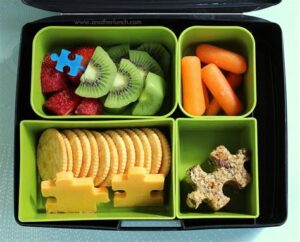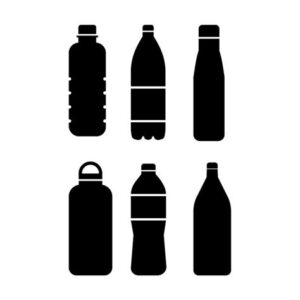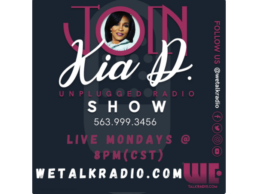How to Go Back to School In Style
How to Go Back to School In Style
8/12/2021
By: Aaron Kaushal
Edited by: Kaitlin Graham
When returning back to school there are many products that students will need in their educational journey. Pencils, pens, erasers and highlighters are always fairly easy to find and pick out.
However, today there are many different designs and styles available for students when it comes to backpacks, or even notebooks. If you want to return to school in style, the following products have many design options available for purchase, allowing you to express yourself in a whole new way. Continue reading to find out how you or your child can stand out when going back to school!
Backpacks
 Backpacks come in many shapes, sizes, colors, and designs. Many students often look for the most stylish backpack that fits all their needs. Going on Amazon and simply typing the word “Backpack” will give you access to view over 10,000 backpacks available.
Backpacks come in many shapes, sizes, colors, and designs. Many students often look for the most stylish backpack that fits all their needs. Going on Amazon and simply typing the word “Backpack” will give you access to view over 10,000 backpacks available.
Popular backpack brands among high school and college students include North Face, High Sierra and Under Armour.
Lunch Bags
The days of being embarrassed to bring a sack lunch to school are over! Impress your classmates by showing up with the coolest lunch bag in school!
with the coolest lunch bag in school!
Similar to backpacks, lunch bags also come in a wide variety of choices. Searching for “Lunch Bags” on Amazon will also let you view over 7,000 options, all coming in different shapes, sizes, and designs.
Folders and Notebooks
A notebook is always something good to have on-hand in your backpack. Having a notebook for each class is a great way to stay organized.
Notebooks come in a wide array of colors, as well. Having a different color for each class is a popular method many students utilize. The same idea can be applied to folders as well, for keeping track of any loose papers.
Reusable Water Bottles
Being able to have cold water any time of the day is always nice. With an insulated water bottle, you can keep your  water cold. Look for a bottle that is small enough to fit in your backpack so you can stay hydrated without having your hands full.
water cold. Look for a bottle that is small enough to fit in your backpack so you can stay hydrated without having your hands full.
Instead of having to drink from water fountains, having your own bottle can save you time and energy. On top of that, bottles also come with many different designs so you can always find one that matches your taste and style!
Popular water bottle brands include Swell, Hydro Flask and CamelBak.
Masks
Many public schools and colleges will still be requiring masks on campus for the 2021-2022 school year. Instead of picking up a boring plain mask, find one that suits your style!
Masks and face coverings are available in a wide variety of colors and designs. Looking on Amazon or surfing the internet for masks can result in finding some unique looking masks.
Don't hesitate to stand out with a unique printed mask! You can find some here.
Should schools have in-person classes this year?
Should schools have in-person classes this year?
8/10/2021
By: Geoffrey McMain
Edited by: Kaitlin Graham
As schools and millions of teachers, parents, and students brace for the new academic year and the reopening of schools, countless concerns are still up in the air surrounding the pandemic.
These concerns are magnified by the highly contagious Delta variant of the COVID-19 virus, which has rapidly become the dominant variant in the United States, leaving many wondering whether or not reopening schools is a good idea at all. Despite the uncertainty, there is a wealth of research regarding the pandemic that can hopefully illuminate a path forward.
What does the public think about school re-openings?
According to a national tracking poll done by the Morning Consult in June, the general public’s opinion seems to favor sending kids back to school. The study found that 74% of all adults are at least somewhat comfortable sending children to school and only 12% are not comfortable at all.
A similar poll also conducted by the Morning Consult found comparable results with parents: 74% at least somewhat comfortable having their children back in school and only 9% not comfortable at all.
It’s important to note that these studies were conducted before Delta became the dominant variant of COVID-19 in the United States, so they may not entirely reflect the population’s current opinion.
What risks do school openings pose to children and others?
The three most important infectious disease statistics are transmission, hospitalization, and death rates, so to understand the risk of re-openings, it’s best to look at these statistics for children.
In February, The Journal of Infectious Diseases published a study that found death and hospitalization rates for those aged 1-18 were significantly lower than elderly or at-risk patients. The study also discovered that when mitigation efforts (masks, social distancing, contact tracing, etc.) were established in schools, the transmission rate in primary schools was limited; however, in secondary schools, the infection rate was similar to that of the general population.
Despite the evidence of limited transmission in schools, a study from the Clinical Infectious Diseases Organization found that the infection rate was similar across all age groups, even children. Although, a possible answer to this is that children are infected outside the classroom and not within.
How are families affected by school closures?
Research reflects that children are negatively affected across-the-board by school closures, as confirmed by one study published in April. It found that even in best-case scenarios, students suffer from not being physically present in school: a fact exacerbated significantly in underprivileged communities, where learning losses are 60% larger than in other homes.
Besides the negative effects on learning, families suffer in other ways from school closures, with a February report from Rutgers University discovering high risks for emotional and social issues in both children and parents, as well as difficulty finding childcare support for young children, and even nutritional problems for low-income students who rely on free or low-cost school meals.
These issues pose a significant challenge for many families, especially those in disadvantaged areas that lack the resources to address them adequately.
Concerns Over the Delta variant
The Delta variant of COVID-19 has been quick to grip the public’s attention as it’s become the dominant form of the Coronavirus in the United States. The data shows that Delta is significantly more transmissible than other forms of COVID, given its viral load is more than 1,000 times larger than other variants.
While children are more likely to be infected with the Delta variant than before, the evidence still points to a lower transmission rate, hospitalization, and death than the general population. Regardless, Delta is a significant threat to many people and has directly led to a sharp uptick in cases and deaths, making it a point of concern for families with children heading back to school.
It’s possible that by fall, enough people will be vaccinated to curb the tide of Delta, but in a pandemic, the future is unlikely, and what effect this variant will have on school openings remains to be seen.
Where does that leave us?
Given the wide array of problems children face learning at home, it’s clear that being physically back in school is necessary for students, but how that can be reconciled with the potential dangers of in-person learning can only be determined by each family. All that’s clear is that everyone should take precautions and get vaccinated as soon as possible to protect themselves and others.
The Kia D Unplugged Show feat. Activist Mark Hughes (REWIND)
The Kia D Unplugged Show feat. Activist Mark Hughes (REWIND)
The Kia D Unplugged Show feat. Activist Mark Hughes (REWIND)
The Kia D Unplugged Show feat. Activist Mark Hughes (REWIND)








